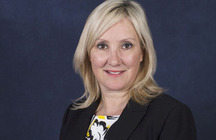Lord Alton of Liverpool – 2015 Parliamentary Question to the Department of Health
The below Parliamentary question was asked by Lord Alton of Liverpool on 2015-02-11.
To ask Her Majesty’s Government, further to the Written Answers by the Parliamentary Under-Secretary of State for Public Health, Jane Ellison, on 11 September 2014 (HC Deb, cols 664–5W), what is the minimum number of fresh eggs required for the nuclear DNA to be extracted and moved elsewhere in order to generate each reconstructed embryo by pronuclear transfer; what consideration the Human Fertilisation and Embryology Authority (HFEA) has given to the appeal for additional egg donors publicised via chroniclelive.co.uk on 3 February; whether the HFEA holds records for any licensed centres in which the incidence of hospitalisation due to ovarian hyperstimulation syndrome (OHSS) is equal to or greater than that described in the journal Human Fertility (volume 10, issue 3, pages 183–7); and what changes the HFEA has introduced since the publication of the McCracken Report to mitigate the risks of OHSS in accordance with recommendations 10 and 11 and in the light of paragraphs 4.40 and 4.44 therein.
Earl Howe
The Human Fertilisation and Embryology Authority (HFEA) has advised that it is not in a position to know the minimum number of fresh eggs required for mitochondrial donation. Subject to the approval process agreed by the HFEA, this will be a matter for clinical teams involved.
The HFEA will be developing its expectations as regards donation for treatment or clinical use, taking into account information for patients and donors and consent requirements.
The HFEA has also advised that it does not hold information on ovarian hyperstimulation syndrome (OHSS) that would allow it to undertake an analysis of the incidence of hospitalisation due to OHSS.
The McCracken report was considered by the HFEA at its meeting in September 2013. As regards recommendation 10, about the HFEA’s regulatory focus, it was agreed by the Authority that this would form the basis of the HFEA’s development of its strategy for 2014-17. The HFEA strategy was agreed by the Authority in July 2014 following extensive consultation with stakeholders. The strategy does not expressly set out the actions it proposes to take as regards OHSS. The HFEA advised that it continues to discuss with key stakeholders, including professional groups, what actions, if any, can be taken jointly by those stakeholders.
In relation to recommendation 11, the HFEA advises that an information sharing agreement with the Medicines and Healthcare products Regulatory Agency is working well in practice and that any concerns identified by the HFEA are discussed and necessary action is taken by the respective body.


